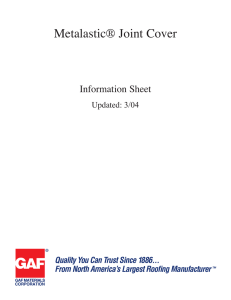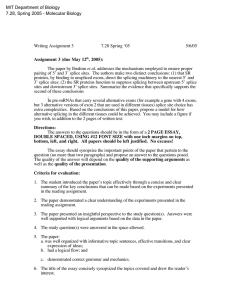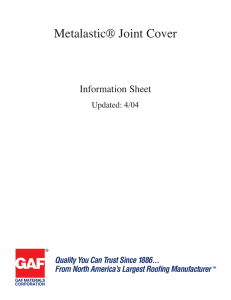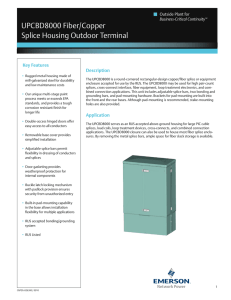3.6 Beam and column splices
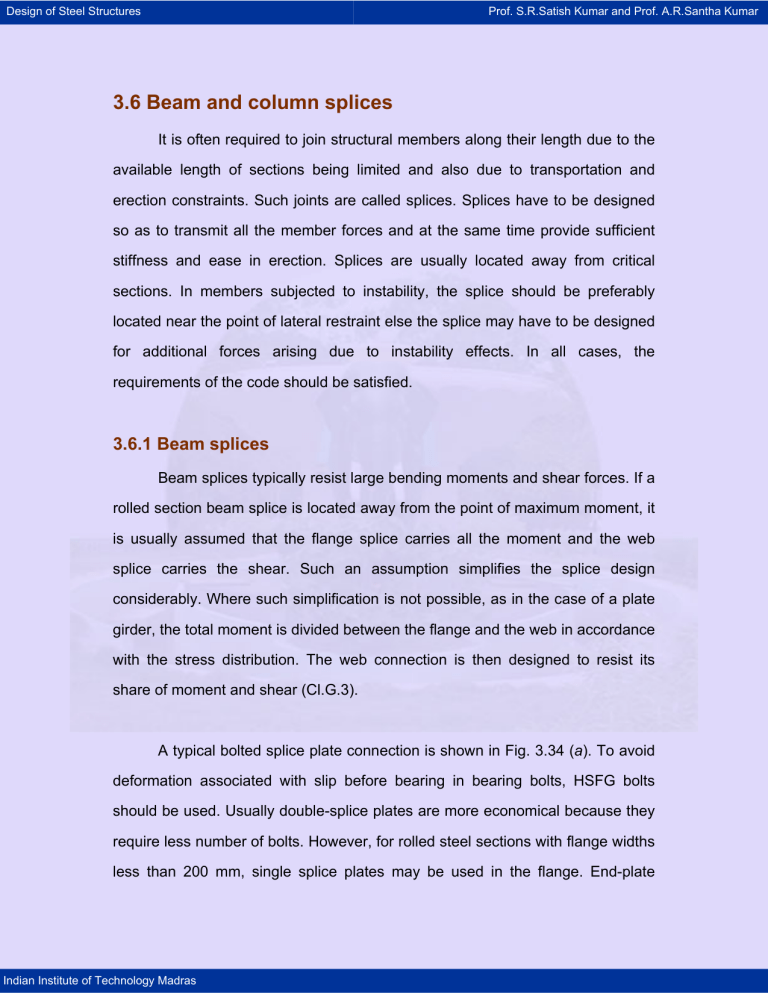
Design of Steel Structures Prof. S.R.Satish Kumar and Prof. A.R.Santha Kumar
3.6 Beam and column splices
It is often required to join structural members along their length due to the available length of sections being limited and also due to transportation and erection constraints. Such joints are called splices. Splices have to be designed so as to transmit all the member forces and at the same time provide sufficient stiffness and ease in erection. Splices are usually located away from critical sections. In members subjected to instability, the splice should be preferably located near the point of lateral restraint else the splice may have to be designed for additional forces arising due to instability effects. In all cases, the requirements of the code should be satisfied.
3.6.1 Beam splices
Beam splices typically resist large bending moments and shear forces. If a rolled section beam splice is located away from the point of maximum moment, it is usually assumed that the flange splice carries all the moment and the web splice carries the shear. Such an assumption simplifies the splice design considerably. Where such simplification is not possible, as in the case of a plate girder, the total moment is divided between the flange and the web in accordance with the stress distribution. The web connection is then designed to resist its share of moment and shear (Cl.G.3).
A typical bolted splice plate connection is shown in Fig. 3.34 ( a ). To avoid deformation associated with slip before bearing in bearing bolts, HSFG bolts should be used. Usually double-splice plates are more economical because they require less number of bolts. However, for rolled steel sections with flange widths less than 200 mm, single splice plates may be used in the flange. End-plate
Indian Institute of Technology Madras
Design of Steel Structures Prof. S.R.Satish Kumar and Prof. A.R.Santha Kumar connections may also be used as beam splices [Fig. 3.34( more flexible.
b )] although they are
Fig. 3.34 Bolted beam splice: (a) Conventional splice (b) End-plate splice
3.6.2 Column splice
Column splices can be of two types. In the bearing type, the faces of the two columns are prepared to butt against each other and thus transmit the load by physical bearing. In such cases only a nominal connection needs to be provided to keep the columns aligned. However, this type of splice cannot be used if the column sections are not prepared by grinding, if the columns are of different sizes, if the column carries moment or if continuity is required. In such cases, HSFG bolts will have to be used and the cost of splice increases. When connecting columns of different sizes, end plates or packing plates should be provided similar to the beam splice shown in Fig. 3.34( b ) (Cl.G.3).
Indian Institute of Technology Madras
